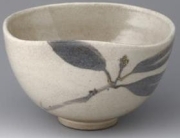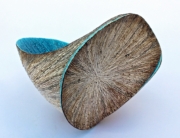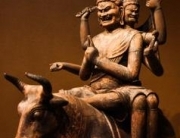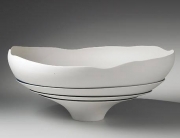Oribe yaki is still extremely popular today, and most people consider it to be a classic type of Japanese art. People don’t really find much other art in other countries that has been influenced by the Oribe movement. That makes it rather unique in the world.
Collectors consider formulaic brown on green glazing patterns to be among the worst examples of Oribe yakimono ceramics. The characteristic green copper glaze can easily be misused.

Seasonal Displays Work Especially Well in the Autumn and Winter Months
On the other hand, the best pieces might make someone feel as though they were living in the Momoyama era. Koyama Shigeru of Nogano is an excellent example of an artist who continues to make pieces that could be found today that look just as good as those made in the 16th century. Koyama-sensei is quite successful because of his adherence to historical practice.
Ironically, this makes his work more exciting and radical than those who continue to produce Oribe yakimono ceramics in a more chronologically modern style. Traditionally pieces look great with food, and those who serve guests sashimi or pickles should feel at home doing so in any season. Oribe pieces work especially well in the fall and winter. Some observes feel that they have earthy or masculine qualities, and these go well with these seasons.
The most expensive pieces can cost over ¥100 million, but affordable antique pieces can cost as little as maybe only ¥1,000. Centuries old pieces sometimes cost less than pieces made by famous contemporary artists. Black kuro oribe yakimono pieces are often some of the most prized, even though they don’t look like most other oribe ceramics.
Regular oribe yakimono ceramics call to mind ferns growing on a moss-covered roof. Kuro oribe ceramics make people think of temples, and the lack of color forces observers to pay close attention to the form and substance. This Zen aesthetic is incredibly difficult to master, which has made some people feel that they are the most valuable examples of this yakimono school.

Brown and Green Glazes can be Combined for Dramatic Effect
Romantics have sometimes described kuro oribe ceramics as a form of koan in space. When someone considers a koan they have to first stop and think about it’s true meaning before they appreciate it. It could be shocking or even ugly before they realize how beautiful it actually is. Kuro oribe art is much the same. It’s initially shockingly abstract, but those who know what they’re looking for will appreciate just how beautiful they actually are.






